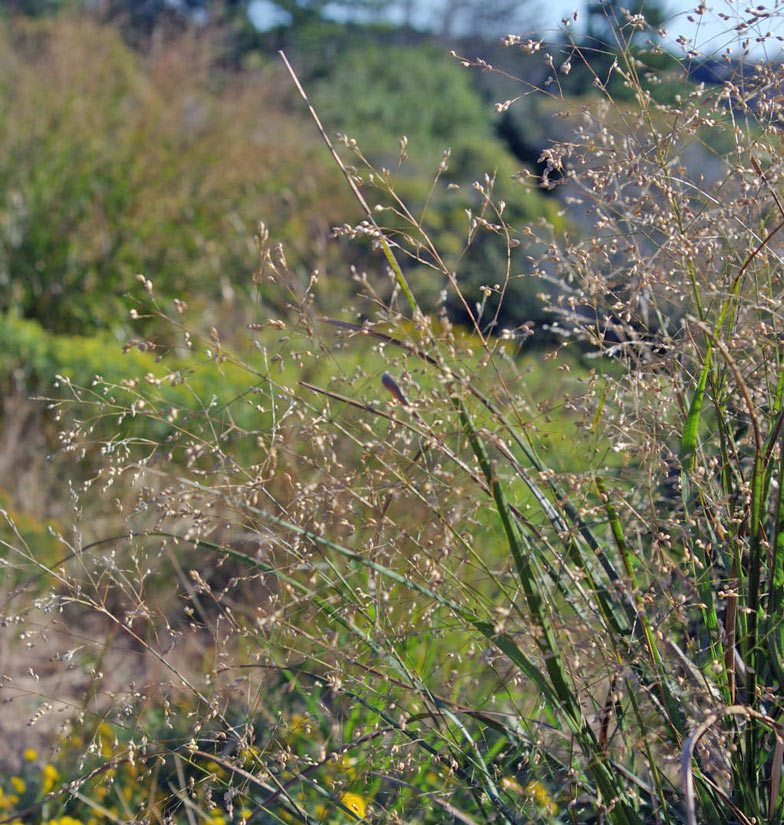Western Great Plains Tallgrass Prairie
Colorado Tallgrass Prairie Natural Area, Boulder County
Summary
The tallgrass prairie is characterized by three species of waist-high grasses which interestingly all have bluish stems during the summer growing season which turn to red-bronze in the fall. This plant community used to be a major feature in the eastern plains of Colorado. Kansas and Nebraska before European settlement, until it was plowed under for crops leaving only very few and tiny remnants to the present day. Tallgrass prairie occurs in two types of substrates, one with deep soils and one with shallower, rocky soil. Most of the deep-soil areas were cultivated for crops, but the shallow-soil type were not, and still occur in large areas in Kansas and Oklahoma.
The tallgrass prairie in Colorado occurs in a narrow strip along the front range, in a few rocky lava-capped mesas in southeast Colorado (Mesa de Maya) and along a few of the major streams near the eastern border of the state. All of these places are somewhat moister than areas that contain the shortgrass and midgrass communities.
The tallgrass prairie contains two grass species which are indicators of the community, Switchgrass (Panicum virgatum), and Indiangrass (Sorghastrum nutans). Wetter areas usually contain Prairie Cordgrass (Spartina pectinata), and drier sites usually contain Blue Grama (Bouteloua gracilis) and Little Bluestem (Schizachyrium scoparium).
Some Commonly Associated Plants
Click on photo to see full-page lightbox image.
In lightbox, click on X in upper right corner to return here.
Switchgrass (Panicum virgatum)
Switchgrass (Panicum virgatum), Grass Family (Poaceae). Native and common on the eastern plains, in sandy soil, and ponderosa pine forests, from plains to foothills on the eastern and western slopes. An indicator species of the tallgrass prairie. Blooms from June through September. Photo by Mo Ewing.
Because of the increase in human population over the last 125 years, no good sites remain along the rivers of the eastern plains and only one tiny site exists on Mesa de Maya. The best remaining sites occur in protected sites around Boulder in several small pieces.
The Boulder tallgrass prairie occurs along the floodplain south of Boulder Creek. Most sites have a high water table or coarse gravels deposited glaciers in the last ice age. Coarse gravel, interestingly, acts like mulch by decreasing evaporation from the underlying soils and occur most abundantly in terraces along the Front Range. Mesas like Rocky Flats used to have extensive tallgrass prairies, but these were extirpated by grazing.
All of the remaining tallgrass prairie sites are protected due to efforts by William H. Moir, a scientist, and Jim Crain who worked for the City of Boulder Open Space in the 1960s and 1970s. In the Boulder area the lower and wetter sites have denser tallgrasses containing more Cordgrass and Switchgrass and in drier adjoining prairie (and in Mesa de Maya), less tallgrass and more Little Bluestem.
– Mo Ewing
Citations: The Boulder Tallgrass Prairie by William Baker and Susan M Galatowitsch, August 15, 1985, unpublished

